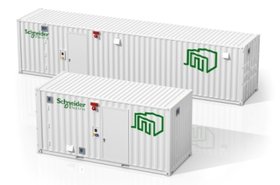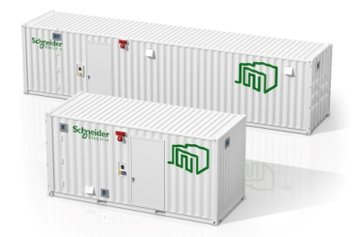The hottest trend in data centers today is the transition from large, centralized facilities to a more distributed model in which applications run on a flexible, right-sized, interconnected system of on-premises, cloud, and edge data centers.
One key factor driving the momentum toward Edge data centers is the surge in IoT devices, which generate vast amounts of data that needs to be processed as close to where it was created as possible in order to reduce latency and improve performance.
Examples include smart factories in which the machinery is instrumented with IoT devices, smart cities in which infrastructure such as street lights or traffic lights are computerized, and transportation industry scenarios such as autonomous vehicles that connect to Edge data centers over 5G.
For organizations looking to ramp up their deployments of Edge data centers, prefabricated modular data centers offer significant advantages over the build-it-yourself approach. Prefab data centers enable organizations to quickly deploy Edge data centers at scale and design them to fit their specific requirements.
Another important advantage of modular data centers is that they can be located outside of the existing facility. This means ongoing factory or retail operations are not disrupted, and the available space inside the facility is not reduced by the need to carve out room for a new data center. This growth in the network Edge is the focus of my recent discussion with Joe Kramer, Global Director of Sales and Marketing of Prefabricated Modular Data Centers at Schneider Electric.
You can check out our conversation about the network Edge in this video.
Edge computing growth
Until recently, pre-processing large volumes of data at the Edge was difficult, but the emergence of AI and machine learning has made data analytics at the Edge a reality. Now, a more cost-effective and efficient approach is to process as much IoT data as possible on site and then move a subset of that data to the cloud for deeper analytics.
Edge computing provides benefits for organizations that want to extend their cloud computing capabilities to Edge locations for faster decision-making. Still, it creates new opportunities for companies to innovate and develop new Edge-based services. An example would be an airline that installs a mini data center at each airport and provides personalized, real-time information and services to its flying customers.
Why prefabricated modular data centers are a great fit for the edge
By 2025, 85 percent of infrastructure strategies will integrate on-premises, colocation, cloud, and edge delivery options, compared with 20 percent in 2020, according to Gartner. The shift toward edge computing means that organizations will need to deploy multiple data centers in a predictable, scalable manner.
For example, if an organization has 15 factories across the globe that are all running the same equipment, using the same IoT devices and processing data in the same way, it would want to get all of those mini data centers up and running as quickly as possible. Prefabricated modular data centers enable them to implement a standard design and to right-size the data centers to fit current needs but also to have the flexibility to expand over time.
Going the prefabricated modular route enables the organization to select from a range of reference designs, to take advantage of the expertise, speed, and quality assurance associated with the data center such as those being assembled by the experts at Schneider Electric. In addition, a prefab approach enables site work to take place in parallel with the assembly so that the data center can be up and running quickly.
Interested in learning more? For more insight into how edge computing creates demand for prefab modular data centers, check out this video The Future of Prefabricated Modular Data Centers – Network Edge.
More...
-

Schneider Electric promises to reboot DCIM for the modern world
DCIM 3.0 will handle hybrid and Edge at the CIO level
-

DCD>Talks Sustainability through Software with Mark Hurley, Schneider Electric
Dive into sustainability through software with this DCD>Talk from our live DCD>Connect Silicon Valley event
-

Schneider launches streamlined micro data center service in Europe
Easy modular data centers ordered off a catalog page


